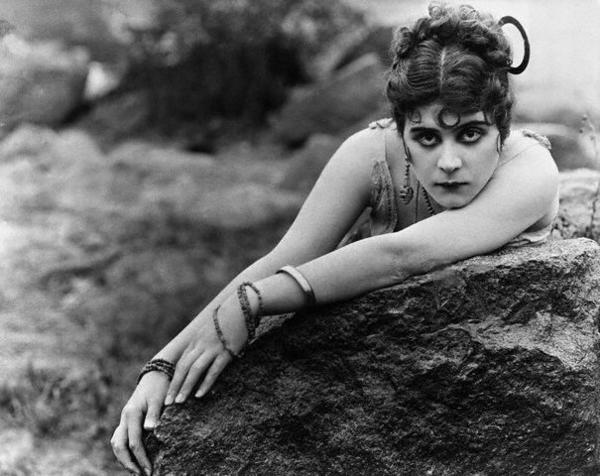The movement and performance styles in silent films evolved during the 1910s and 1920s, becoming less theatrically-rooted and more naturalistic or at least authentic. But enough of what was adapted to a specific performance style, unique to Silent Film, remained at the end of the 1920s. How much of that is theatrical performance or distilled pantomime and how much of it is Silent Film performance techniques?
A lot of the theatrical conventions were accepted or acceptable to movie-going audiences during the silent era. The eyeliner, lipstick, pancake-white make-up applied just to the face and neck. The same goes for what we in hindsight think of theatrical gestures and movement. At the time, movies were a sort of evolvement out of theater, and so the slap-shoes, and full-body choices in comedies, the indicating to convey emotion, and more held on in moving pictures into the early or mid-1920s.
They may appear to be arcane or antiquated to us today, and are often mistaken for “silent movie acting”. But it’s what performers knew, and even the ones who hadn’t spent years in vaudeville would pick up the rhythms and physicalities from fellow performers on the shooting stages or in rehearsals. Harold Lloyd, for example, was not a circus or music hall comedian originally — his performance experience had been on the “legitimate stage” — but by the time he’s left Keystone after a year, and perhaps after another year as Lonesome Luke absorbing things from veteran performer Snub Pollard, you’d never know he hadn’t spent time in vaudeville.
Part of the holding on to the physical traits of theatrical performance is rooted in the need to be able to convey to the audience the beats in the scene and emotional moments or drama without the aid of speech. The economy of the movement style appears to develop during the early ‘teens, where the language is less reliant on mouthing lines of dialog or point to people or doors etc, and we’re given just enough information so we can tell what’s going on without lip-reading and overt gestures. This, of course, partnered with the support of occasional sub-titles.
But strip away the Victorian-era physicality, and Silent Film performance is still possible. There’s still a way to convey information, just enough of it, for the viewer to understand what’s going on, which I’ll cover in the next post.
The first post in this series is here.
The previous post (#13) to this one is here.
The next post (#15) is here.
[email-subscribers-form id=”1″]
